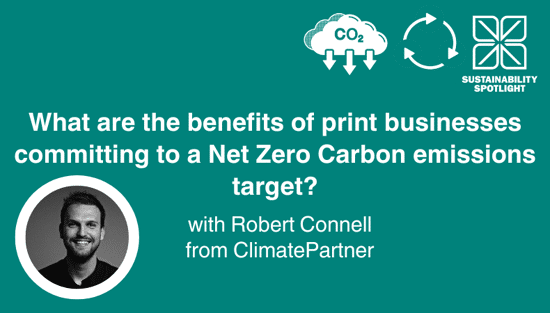6 Sustainable Printing Practices Changing the Game in Textile and Apparel Decoration

The textile industry is shifting towards sustainability. Innovations like waterless and digital printing, eco-friendly inks, and recycled materials are reducing waste. AI and automation optimise production, while circular models promote reuse. Consumer demand for transparency drives this change, making sustainable practices essential for future-focused brands.
Sustainability has become a force in the textile and apparel space, reshaping how products are made, sourced, and decorated. Once viewed as a high-impact sector due to its water consumption, chemical use, and labor concerns, textiles are now at the center of a transformation toward more responsible practices. Printing is undergoing a significant change. Traditional, legacy methods have been resource-intensive and wasteful, but advances in technology, smarter production systems, and growing eco awareness are opening the door to more sustainable alternatives. From ethical sourcing to cleaner production and circular business models, the industry needs to rethink every step. GOTS and OEKO-TEX certifications are helping set standards, while EU initiatives such as the Green Deal and Digital Product Passport are raising expectations across global markets.
The textile/apparel industry is under pressure to clean up its act, and a new wave of sustainable printing practices is reshaping how garments get decorated. Let’s have a look.
1. Waterless Printing
Conventional textile printing can use tens of liters of water per meter of fabric—most of which ends up contaminated. Waterless printing methods, like dye sublimation or pigment printing, bypass this. The systems use heat to cure inks and do not require steaming or washing, slashing water usage and minimizing pollution. For an industry notorious for dye runoff and water waste, going waterless is huge.
2. Digital Direct-to-Garment (DTG) Printing
DTG has taken off for more than just its ability to print full-color, high-detail designs…it’s also far more sustainable than screen printing. It allows for short runs and on-demand production, reducing overstock and textile waste. It requires less energy and fewer raw materials, while the precision of digital means less ink is used overall.
3. Eco-Friendly Inks
Traditional plastisol inks contain PVC and require solvents that release volatile organic compounds (VOCs). In contrast, water-based inks used in DTG systems offer a safer, cleaner alternative. They’re biodegradable, free of heavy metals, and are more sustainable. Brands that switch to water-based inks not only reduce their environmental impact, but they also send a clear message to eco-conscious consumers.
4. Recycled and Organic Substrates
Sustainability in print decoration doesn’t stop at the ink. Many printers are shifting to organic fabrics (like GOTS-certified cotton) or recycled materials (like rPET). Printing on sustainable textiles reduces the total lifecycle impact of a garment. And when combined with clean printing methods, it creates a much lower environmental footprint from start to finish.
5. Closed-Loop and Circular Production Models
The most forward-thinking companies are embedding print into circular fashion systems, including take-back schemes where consumers can return used garments for reuse or recycling. These models maximize garment usage and reduce the need for virgin production. Some print-on-demand setups include recycling logistics from the start.
6. AI, Automation, and Robotics
The next wave of sustainability is being driven by intelligence (artificial or otherwise). AI is transforming everything from forecasting to fulfillment. By analyzing real-time data, AI helps brands better predict what consumers will buy, decreasing overproduction and the waste that comes with it. Automation means fewer errors, less energy usage, and faster turnaround times. Robotics are stepping into tasks like optical alignment and garment unloading, reducing human strain.
The Bottom Line
Businesses are making systemic changes to support sustainability. It’s no longer limited to isolated initiatives or green marketing—it’s essentially the core of how companies operate. From product design and sourcing to manufacturing, marketing, and sales, sustainability is becoming a strategic foundation (not just a feature) and the backbone of how the textile and apparel industry functions.
From waterless printing and eco-friendly inks to AI-driven automation and circular production models, today’s innovations aren’t just cosmetic—they’re forming the foundation of the industry. These shifts help brands reduce waste and conserve resources and meet rising consumer expectations for transparency and accountability.
What’s fueling this change is that shoppers care more about where clothes come from, how they’re made, and who makes them. Consumers expect transparency. They reward brands that prioritize sustainability, tech-enabled traceability, and ethical production, which is pushing brands to invest in smarter, cleaner systems—not just to improve margins, but to stay relevant. When automation meets accountability, the result is a whole new way of doing business.
More importantly, these changes are altering the pace and purpose of production. Instead of mass output, the focus is on more intentional design. The pressure is accelerating innovation in ways the industry has never seen before—the printing process might have been a technical footnote in fashion, but now it’s at frontline. For any future-looking brand, sustainable practices aren’t just nice to have…they’re essential.
The tools are here. Demand is growing. Who’s ready to lead?
Johnny Shell is a textile and apparel decorating expert with almost 40 years of experience. As a Principal Analyst at Keypoint Intelligence he helps clients analyze trends, forecast growth, and develop competitive strategies. Formerly Vice President of Technical Services at the PRINTING United Alliance, he led training programs and chaired industry committees. An inductee of the Academy of Screen and Digital Printing Technology, Johnny is a recognized thought leader, speaker, and contributor to top industry publications.
Recent news

What are the benefits of print businesses committing to a Net Zero Carbon emissions target?
We speak to Robert Connell, Senior Commercial Sustainability Manager at ClimatePartner who who offer solutions along the net zero cycle to support business’s effort in corporate climate action. In this discussion we discuss the importance and the process and benefits of businesses committing to a Net Zero Carbon emissions target.

Sustainability in Production Print: Advancing Practices in Wide Format, Textiles, and Software
As sustainability continues to take centerstage across industries, the production print sector is making massive strides in integrating eco-conscious practices. From wide format to textile applications, with the growing reliance on advanced production software, the space is evolving to meet environmental goals as well as consumer demand for sustainable products.

Why must the print industry recognise software and material innovation
Laurel Brunner argues that the printing industry must recognise the value of both software and material innovation, and be willing to pay for it. Software, though intangible, drives efficiency and reduces carbon footprints. While materials science currently dominates, R&D costs are inherent in all advancements. Paying a premium ensures continued progress, benefiting the industry's evolution and sustainability.

Green Printing: how Sustainability drives business success
Nessan Cleary shares sustainable printing benefits businesses and the environment. Auditing suppliers and using eco-friendly materials are crucial. Optimising production with energy-efficient equipment and minimising waste reduces costs. Proper waste disposal and premises efficiency further lower the carbon footprint. Staff training and customer recycling solutions complete the sustainable approach.